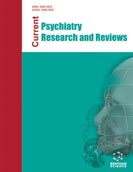Abstract
Aim: This study aims to determine the effect of skin-to-skin contact between father and baby within the first three hours following childbirth on the level of paternal attachment.
Methods: Data were collected from 69 fathers between May-July 2018 with paternal infant attachment scale in Antalya Medical Park Hospital in Turkey in this quasi-experimental study.
Results: Total score of the fathers who established skin-to-skin contact with the babies was 82.34±7.76, and that of the control group was 66.07±18.2 (p<0.05). Moreover, the paternalinfant attachment level of the fathers in the study group who became fathers for the first time was higher than that of the control group.
Conclusion: The skin-to-skin contact between father and baby following childbirth was an effective practice in the transition to fatherhood.
Keywords: Paternal-infant attachment, skin-to-skin care, transition to fatherhood, father-baby contact, attachment, skin to skin contact.
[http://dx.doi.org/10.11124/JBISRIR-2017-003773] [PMID: 30289768]
[http://dx.doi.org/10.1111/ijn.12828] [PMID: 32166834]
[http://dx.doi.org/10.2196/12371] [PMID: 31518298]
[http://dx.doi.org/10.1080/02646830903298723]
[http://dx.doi.org/10.1080/02646838.2012.757694]
[http://dx.doi.org/10.1080/03004430903414687]
[http://dx.doi.org/10.1080/14616734.2019.1589057] [PMID: 30873899]
[http://dx.doi.org/10.1016/j.jnn.2012.06.001]
[http://dx.doi.org/10.3402/qhw.v9.24906] [PMID: 25319746]
[http://dx.doi.org/10.1542/peds.2014-2411] [PMID: 25560437]
[http://dx.doi.org/10.1016/j.infbeh.2018.08.002] [PMID: 30213511]
[http://dx.doi.org/10.1080/02646838.2017.1371284] [PMID: 29517383]
[http://dx.doi.org/10.1111/mcn.12571] [PMID: 29230957]
[http://dx.doi.org/10.1016/j.midw.2016.07.007] [PMID: 27476026]
[http://dx.doi.org/10.1186/s13063-018-3060-2] [PMID: 30577818]
[http://dx.doi.org/10.1186/s12884-019-2679-7] [PMID: 31892359]
[http://dx.doi.org/10.1016/j.midw.2008.10.006] [PMID: 19084301]
[http://dx.doi.org/10.1080/14616734.2013.820920] [PMID: 24299132]
[http://dx.doi.org/10.1080/02646830701691335]
[http://dx.doi.org/10.1080/03004430.2012.723441] [PMID: 24039329]
[http://dx.doi.org/10.1016/j.midw.2020.102644] [PMID: 32062186]
[http://dx.doi.org/10.1111/1467-9507.00202]
[http://dx.doi.org/10.1111/j.1467-8624.2012.01852.x] [PMID: 23005703]
[http://dx.doi.org/10.1080/14616734.2019.1589066] [PMID: 30898023]
[http://dx.doi.org/10.1080/14616734.2019.1589061] [PMID: 30873905]
[http://dx.doi.org/10.1155/2017/8612024] [PMID: 28194281]
[http://dx.doi.org/10.1111/j.1365-2702.2011.04003.x] [PMID: 22409833]












